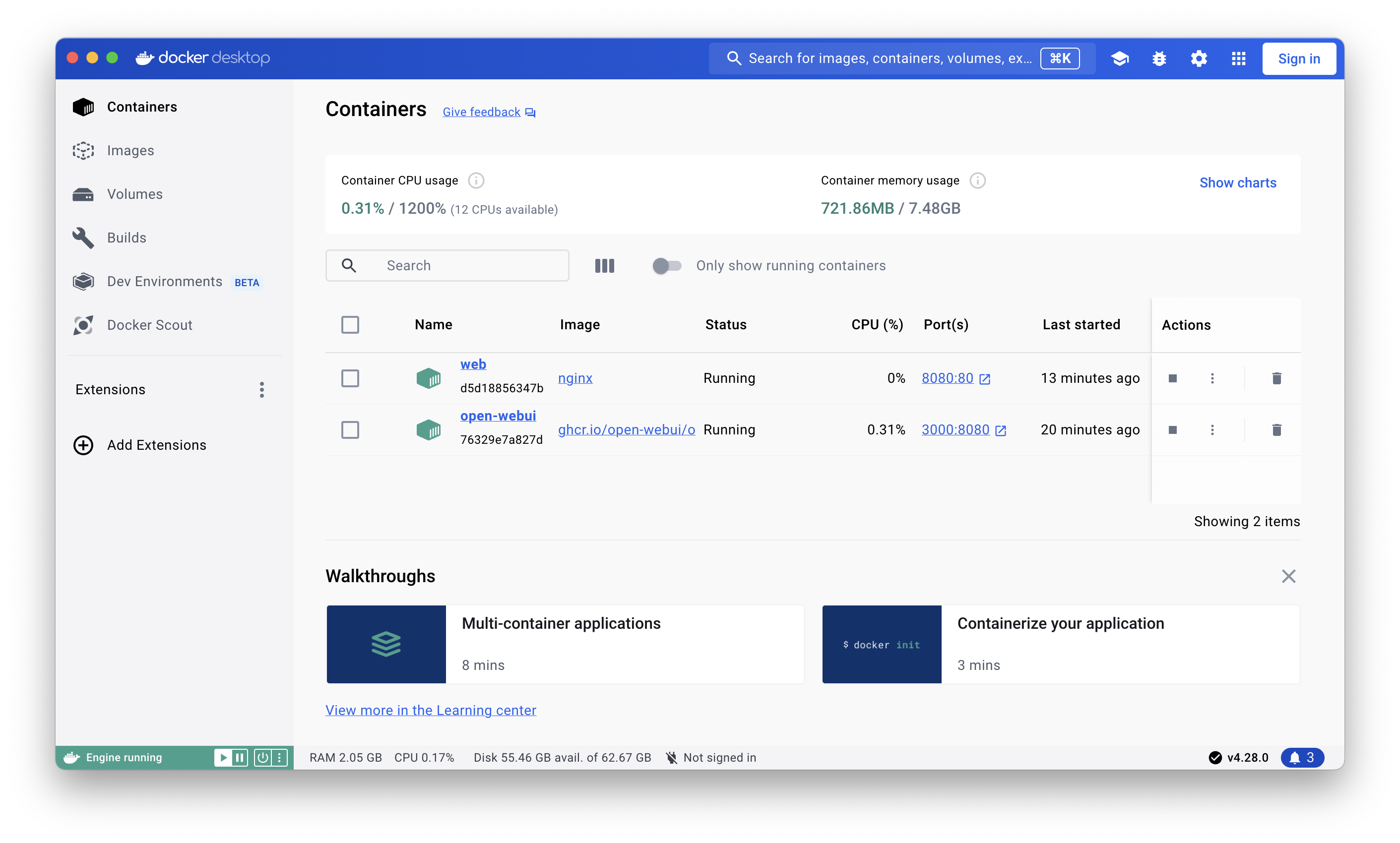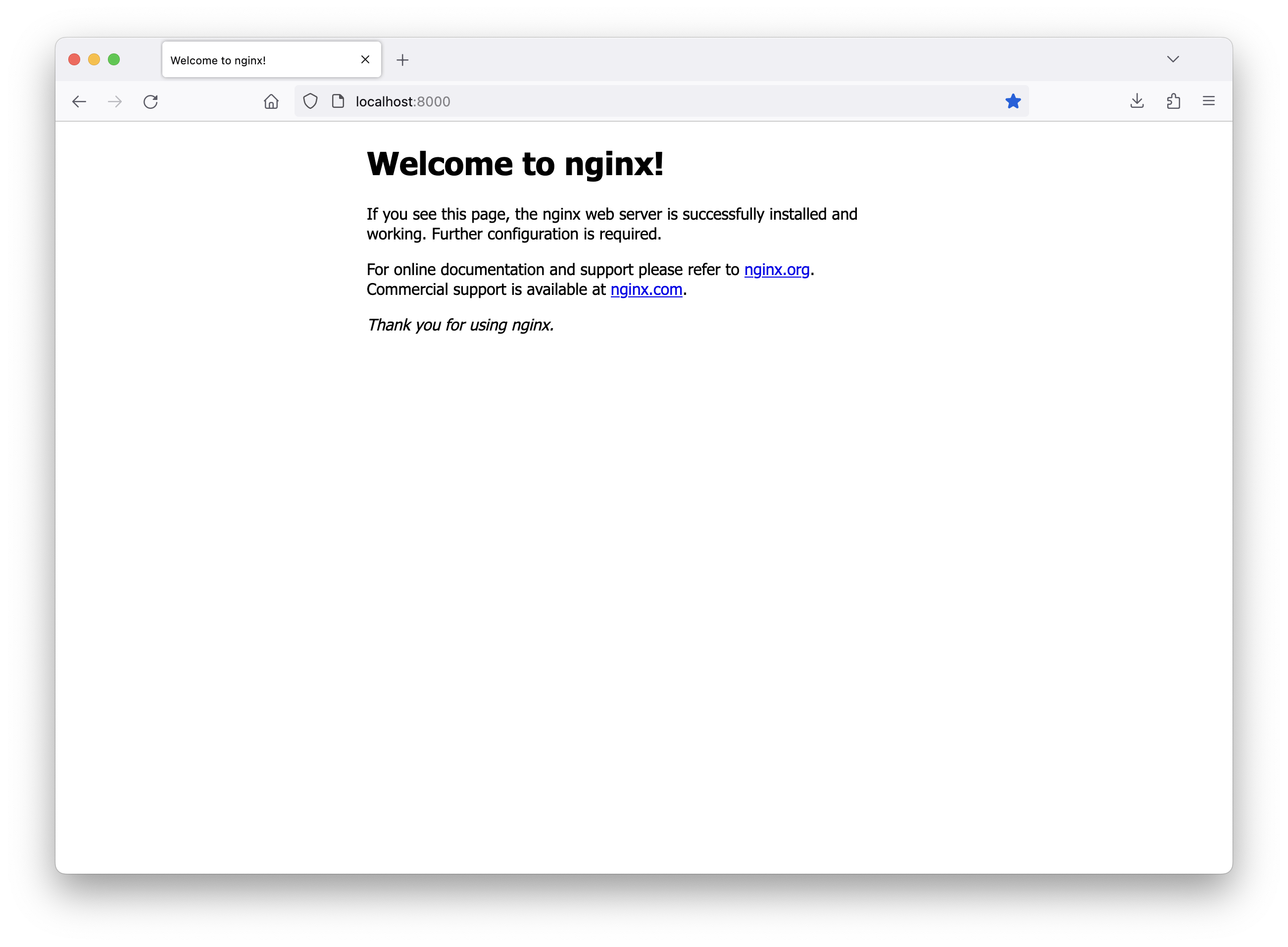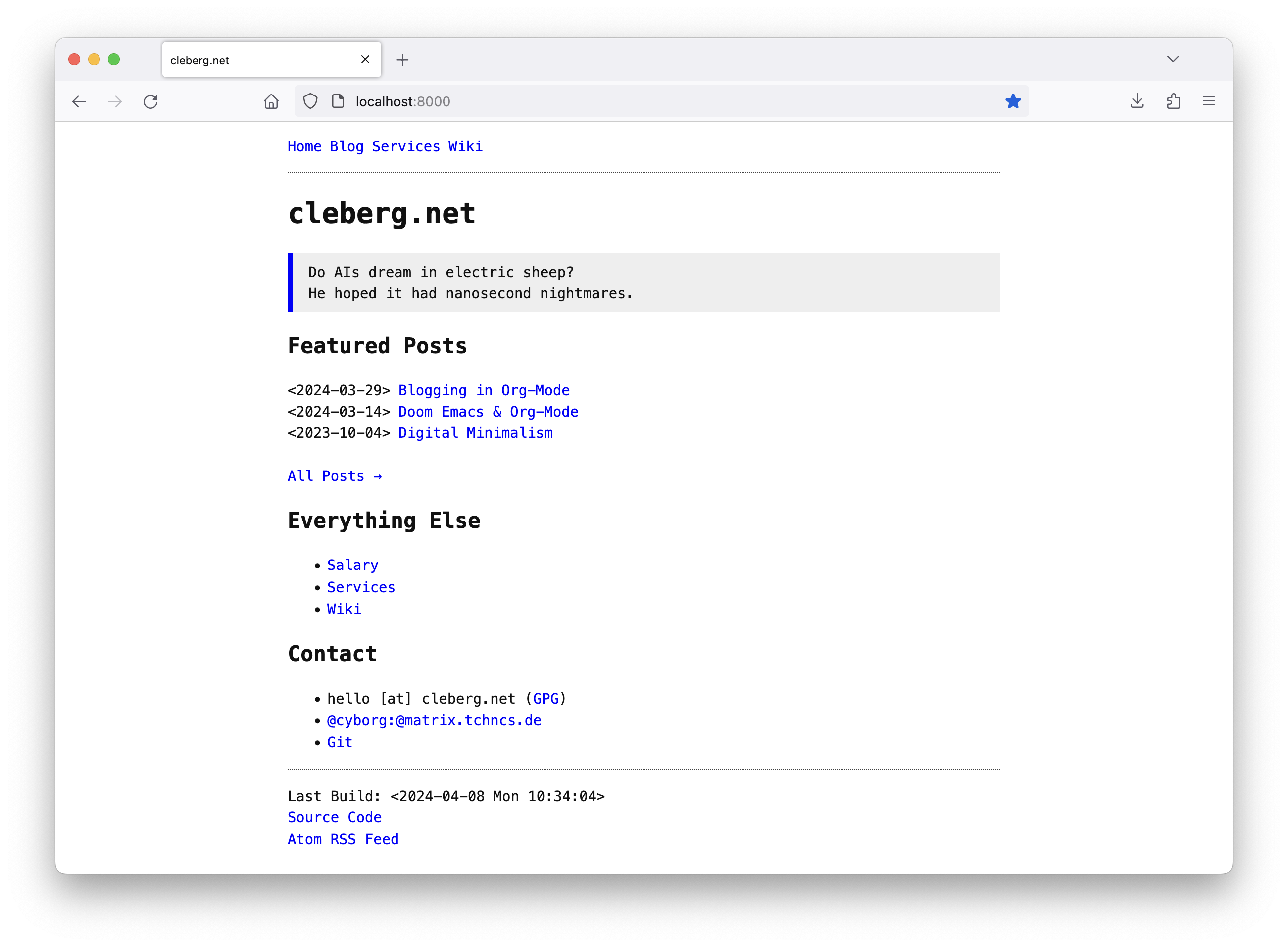diff options
Diffstat (limited to 'content/blog/2024-04-08-docker-local-web-server.md')
| -rw-r--r-- | content/blog/2024-04-08-docker-local-web-server.md | 140 |
1 files changed, 0 insertions, 140 deletions
diff --git a/content/blog/2024-04-08-docker-local-web-server.md b/content/blog/2024-04-08-docker-local-web-server.md deleted file mode 100644 index b6f5354..0000000 --- a/content/blog/2024-04-08-docker-local-web-server.md +++ /dev/null @@ -1,140 +0,0 @@ -+++ -date = 2024-04-08 -title = "Using Docker Desktop to Create a Development Web Server" -description = "" -draft = false -+++ - -When developing websites locally, I often use a simple Python web server to -observe the changes. - -```sh -python3 -m http.server -``` - -However, this approach has its limitations. For example, this approach does not -enable logging or access controls. You also need to customize `SimpleHTTPServer` -if you have advanced needs from your web server. - -So, I went to find an alternative that is almost as easy and far more extensible -and found Docker Desktop to be a suitable replacement. - -# Docker Desktop - -## Installation - -[Docker Desktop](https://www.docker.com/products/docker-desktop/) is a desktop -GUI for the phenomenal Docker container software. This allows you to manage -containers, images, volumes, environments, and extensions via an easy-to-use -GUI. - -To install, open the link above and click the `Download` button for your -platform. I'm going through this process on an M2 Macbook, so I downloaded the -Mac - Apple Chip version. - -Open the installer and follow the installation process until the application -finishes the installation process. - - - -## Creating an Nginx Container - -I prefer to use the command line to create containers, so the following commands -will be input via the terminal. - -The following command will create a container, using the `nginx` image: - -1. `-d`: Run this container as a daemon (detach) -2. `-p`: Allocate a port in the format `<external>:<internal>` -3. `-i`: Keep STDIN open even if not attached -4. `-t`: Allocate a pseudo-TTY -5. `-p`: Allocate a port in the format `<external>:<internal>` -6. `--rm`: Remove the container once it's done running - -```sh -docker run -it --rm -d -p 8000:80 --name web nginx -``` - -You can navigate to <http://localhost:8000> to see the resulting page. - - - -## Customizing the Nginx Container - -Now that I have a container running the Nginx web server, I need to link some -volumes so that I can modify the site configuration and provide the web files to -serve. - -Let's start with the new command, which adds two volumes: - -1. `<your_content>:/usr/share/nginx/html`: This is the directory where you will - provide the web pages for the server to serve. -2. `<your_config>:/etc/nginx/conf.d/default.conf`: This is the Nginx - configuration file for your site. - -To see the updates, you can delete the previous container in the GUI or run -`docker stop web` to stop the container. Once stopped, you can run the new -`docker run` command below. - -```sh -docker run -it -d -p 8000:80 --name web -v ~/Source/cleberg.net/.build:/usr/share/nginx/html -v ~/Source/cleberg.net/nginx-config.conf:/etc/nginx/conf.d/default.conf nginx -``` - -Here's an example of my development configuration file. - -```conf -# nginx-config.conf -server { - server_name cleberg.net www.cleberg.net; - - root /usr/share/nginx/html; - index index.html; - autoindex on; - - access_log /var/log/nginx/cleberg.net.access.log; - error_log /var/log/nginx/cleberg.net.error.log; - - location / { - try_files $uri $uri/ =404; - } - - listen [::]:80; - listen 80; -} -``` - - - -# Customizing Deployment Actions - -I am currently blogging with [weblorg](https://emacs.love/weblorg/), which uses -a custom `publish.el` file to build the static site. Within this file, I have -configured my deployment process to check for the `ENV` variable in thesh and if -it's set to `prod`, the script will set the base URLs to `https://cleberg.net`. -If not, it sets the base URLs to `localhost:8000` (which matches the port used -in the container above). - -Therefore, I have modified my `build.sh` script to build with `localhost` URLs -if `ENV` is not set to `prod`. It also prevents the build process from sending -the built files to the production web server. - -```sh -#!/bin/bash - -if [ "$ENV" == "prod" ]; then - echo "Environment = Production" && \ - rm -rf .build/* && \ - emacs --script publish.el && \ - scp -r .build/* ubuntu:/var/www/cleberg.net/ -else - echo "Environment = Development" && \ - rm -rf .build/* && \ - emacs --script publish.el -fi -``` - -You can modify the container in numerous ways and this approach allows you to -create complex scenarios for your web development purposes. I highly recommend -switching over to a container-based approach for simple, local web development. |
